Suippes to Ste-Menehould
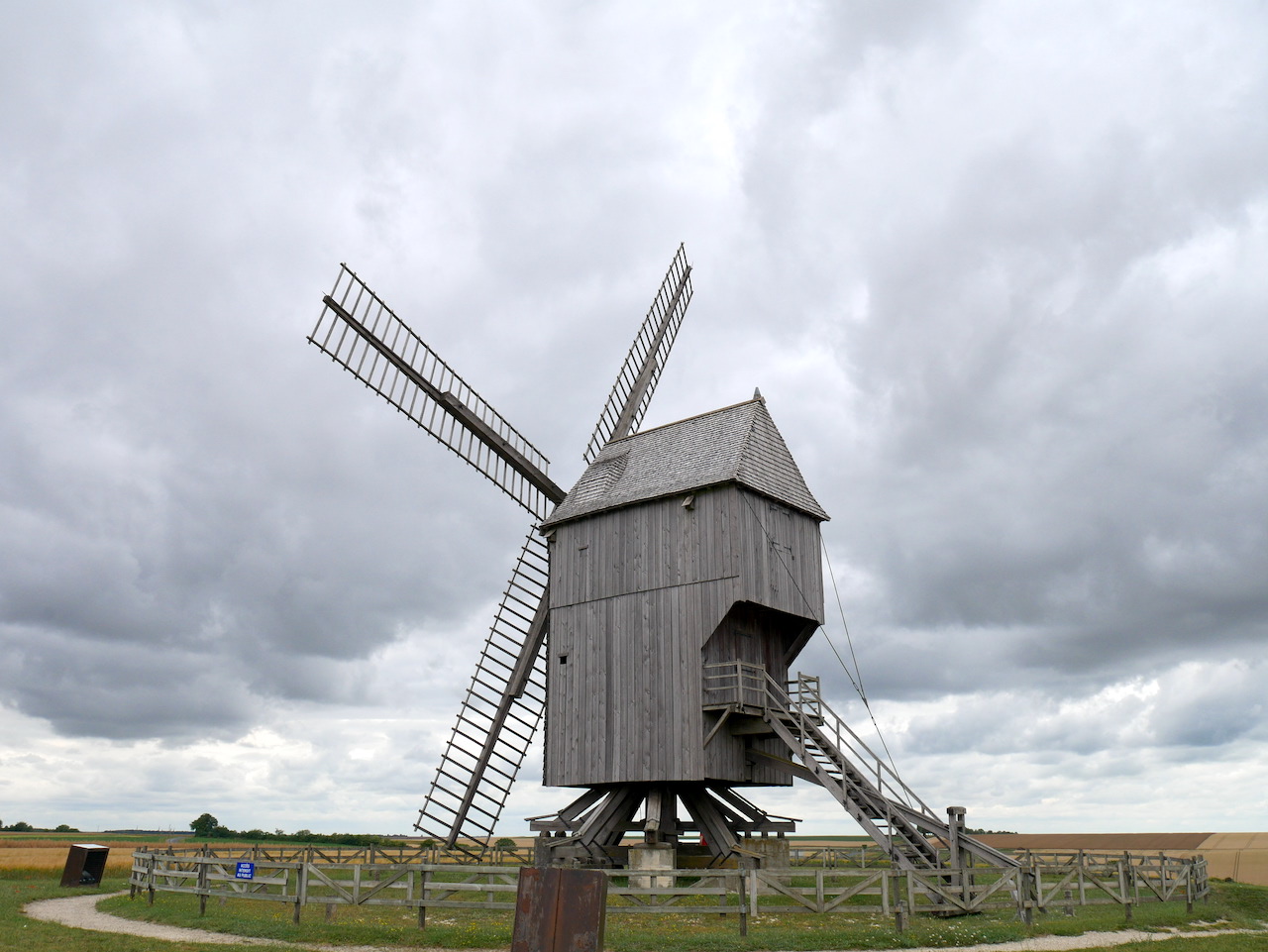
Grand Est
8. Suippes to Ste-Menehould
Difficult
8h
32,1km
+307m
-289m
Step
Embed this item to access it offline
Leaving Suippes by the Way of Freedom you will take the paths of the cereal crops.
In Valmy, you will discover an important episode in the history of the French Revolution. You will end your stopover in Sainte-Ménehould with its rich past. Let yourself be told the story of this defensive position through the centuries that wars have not spared and its hospice created in the 5th century.
In Valmy, you will discover an important episode in the history of the French Revolution. You will end your stopover in Sainte-Ménehould with its rich past. Let yourself be told the story of this defensive position through the centuries that wars have not spared and its hospice created in the 5th century.
8 points of interest
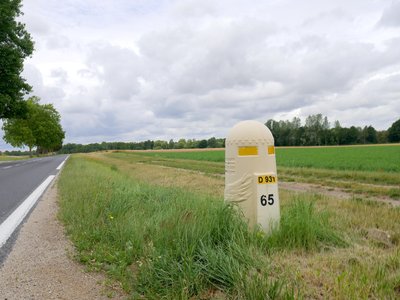
Borne de la Voie de la Liberté entre la Route Nationale et la Via Columbani - Image : Amis de saint Colomban HistoricalLa Voie de la Liberté in Somme-Suippe
Walking along the Via Columbani at the exit of Suippes you will notice bollards, every kilometre, whose dimensions and decoration impose themselves on the roadside.
The Via della Liberty is a road commemorating the victory of the Allies and the liberation of France, Belgium and Luxembourg during the Second World War. It follows the route followed by the 3rd American army commanded by General Patton and more particularly the route from Normandy to the Luxembourg border, bypassing Paris to the south.
More information: Wikipedia
Église Saint-Pierre à Somme-Suippes - Image : Amis de saint Colomban TouristSaint-Pierre Church in Somme-Suippe
The church of Saint Pierre which had been given to the abbey of Avenay by Guy de Chastillon, archbishop of Reims. Built on a mound in the 13th century, the choir, the transept and the western portal are from the 14th century. The two side portals are later, the nave has four bays. It has an organ, the work of organ builders Jacquet Henri and Jacquot Théodore. In 1852, the bell tower is struck by lightning, it is then built shorter. Nowadays, several arches are reinforced by walls of agglos. A sundial is visible on the south façade of the nave. A number of modillions are decorated with faces.
During the 1914-1918 war the church was used as a hospital. In 1915, a military cemetery was opened in the commune now known as the National Necropolis east of the Somme-Suippe.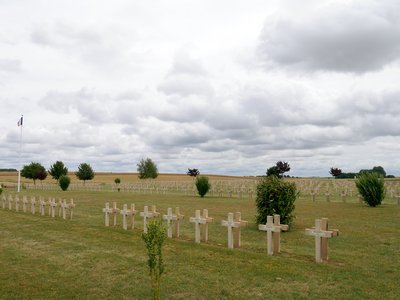
Nécropole de Somme-Suippe - Image : Amis de saint Colomban HistoricalNational Necropolis at Somme-Suippe
This necropolis was created in 1914 and developed from 1919 to 1924. 4,950 French soldiers are buried there, including 1,388 in 3 ossuaries killed during the 1914-1918 war and 12 French soldiers killed during the 1939-1945 war.
Monument restored in 2008.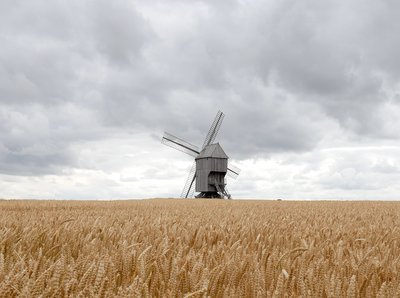
Moulin de Valmy - Image : Amis de saint Colomban HistoricalHistoric centre of Valmy 1792
The famous Moulin de Valmy, which symbolizes the French victory over the Prussians at the Battle of Valmy in 1792, was destroyed on the very evening of the battle on the orders of Kellermann, because it offered an ideal target to the enemy.
The battle began on September 20, 1792 when a Prussian army, commanded by the Duke of Brunswick, attempted to march on Paris. Generals François-Christophe Kellermann and Charles-François Dumouriez succeeded in stopping the Prussian advance near the village of Valmy.
A second mill was built and then demolished in 1831. In 1947 a new mill, coming from Belgium, was installed.
More information / Wikipedia Battle of Valmy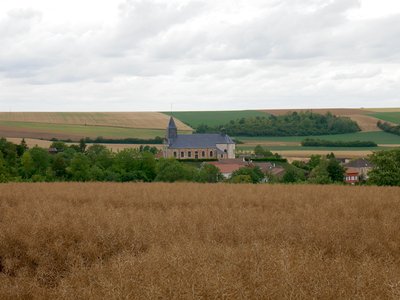
Église Saint-Martin à Valmy vue depuis le Moulin de Valmy - Image : Amis de saint Colomban TouristSaint Martin's Church in Valmy
The church of Saint-Martin de Valmy was rebuilt almost entirely in 1835 (except for the choir dated 1740) on the site of an older building. Numerous restorations were carried out in 1882 and 1924.
The facade consists of an entrance with two pilasters with Ionic capitals protruding slightly forward and framing an oculus, surmounted by a small triangular pediment. Inside, the entrance bay is Palladian in style, rising with a semicircular arch and stretching laterally towards the two side walls.
Mémorial Général Kellermann - Image : Amis de saint Colomban HistoricalGeneral François-Christophe Kellermann Memorial
François-Christophe Kellermann was born in Strasbourg in 1735 into a family of Saxon origin. He began his military career in 1750, but adhered to the ideas of the Revolution and was at the head of the Moselle army during the battle of Valmy (20 September 1792).
He escaped terror in 1793 and under the Empire he was appointed Marshal of the Empire. He entered the Senate.
The Emperor Napoleon I gave him the title of Duke of Valmy. He then joined forces with Louis XVIII who made him Grand Cross of the Order of Saint Louis, Governor of Strasbourg and peer of France.
The Kellermann family has always kept the memory of their grandfather's victory at Valmy alive. The general's great-granddaughter was a benefactress of the commune and a chapel, next to the Kellermann memorial, recalls this memory.
More information: Wikipedia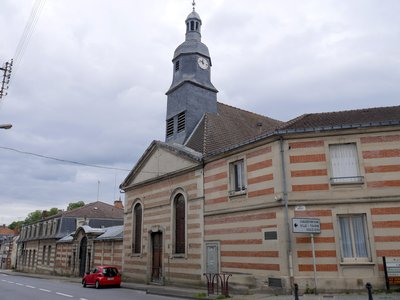
L’hospice du 18e siècle à Sainte-Menehould - Image : Amis de saint Colomban TouristHospital - Hospice in Sainte-Menehould
The first hospice in France is said to have been established as early as the 5th century in Ménehould by two Jews fleeing the persecution of the bishop of Châlons-en-Champagne. They adopted the Catholic religion and settled on the site, which took the name of Sainte-Menehould to found a hospice for the destitute. According to tradition, Lord Sigmar, owner of the site, came with his daughters to bring his services for the comfort of the sick. A 5th-century saint in the Saint-Dizier region is said to have given her name to the town.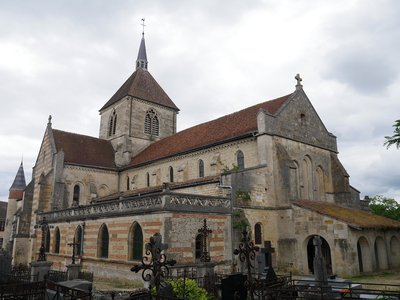
Église Notre-Dame à Sainte-Menehould - Image : Amis de saint Colomban TouristNotre-Dame Church in Sainte-Ménehould
The Church of Our Lady probably replaced the old castle on the heights of the fortified town. Dating from the 13th century, the church was enlarged in the 15th century and then in the 18th century.
The nave and the two aisles extend the transept. A set of chapels are visible.
The organ dates from the 17th century.
More details : Wikipedia city of Sainte-Ménehould
Description
In front of the town hall square turn right on rue Buirette Gaulard D 931 then Avenue du Général Leclerc, continue on D 931 with caution on a road with heavy traffic keep to the left.
- After the railroad crossing, 800 meters further on, turn left onto the farm road along the D 931, cross Somme-Suippe, turn left onto the farm road along the D 931, Voie de la Liberté.
- At Somme-Tourbe second street on the right rue du Pont pass under the railway, at the crossroads turn left, first road on the left
- Second road on the right, go along the railway, leave the railway with the road turning right, at the crossroads turn left and then right, straight ahead on the left at the crow's-foot.
- Before Valmy, turn right to avoid crossing the railway, follow the railway, turn left on the D 284, turn right in front of the railway, after the Princess Ginetti chapel take the second road on the left.
- Turn left at the crossroads with D 931 avenue de la Gare, first road on the right Chemin de Valmy, continue along the railway track on the left, go under the bridge and along the motorway on the right.
- Left at the crossroads with D 85, left on D 982e 2 after the bridge over the railroad track, right on chemin de terre, rue de Gergeaux, rue Sainte-Catherine, at the crossroads slightly on the left on rue Menut
- Turn right on rue Florion, after the Place d'Austerlitz turn right to go up the rue Dom Pérignon, take the stairs on your right and you will arrive at the Notre-Dame church.
- Departure : Saint-Martin Church, place de l’Hôtel-de-Ville, 51 600 Suippes
- Arrival : Notre-Dame Church, rue du Cimetière, 51 800 Sainte-Ménehould
- Towns crossed : Grand Est
Altimetric profile
Report a problem or an error
If you have found an error on this page or if you have noticed any problems during your hike, please report them to us here:





